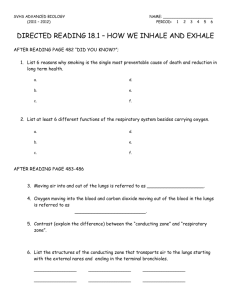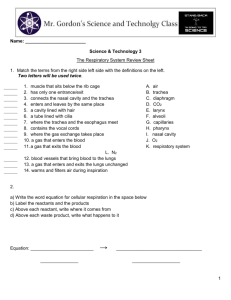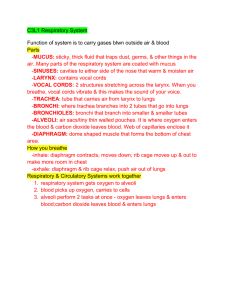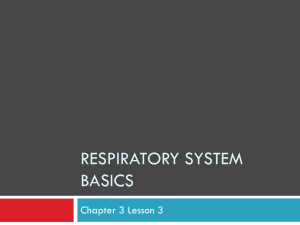respiratory system study guide
advertisement
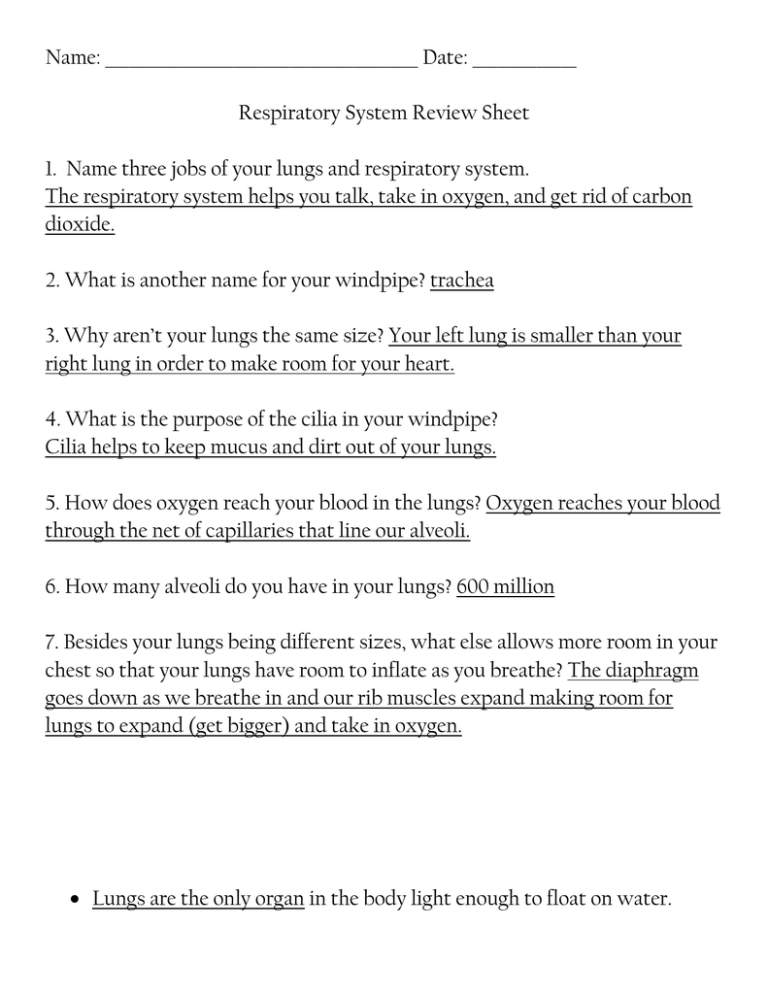
Name: _______________________________________ Date: _____________ Respiratory System Review Sheet 1. Name three jobs of your lungs and respiratory system. The respiratory system helps you talk, take in oxygen, and get rid of carbon dioxide. 2. What is another name for your windpipe? trachea 3. Why aren’t your lungs the same size? Your left lung is smaller than your right lung in order to make room for your heart. 4. What is the purpose of the cilia in your windpipe? Cilia helps to keep mucus and dirt out of your lungs. 5. How does oxygen reach your blood in the lungs? Oxygen reaches your blood through the net of capillaries that line our alveoli. 6. How many alveoli do you have in your lungs? 600 million 7. Besides your lungs being different sizes, what else allows more room in your chest so that your lungs have room to inflate as you breathe? The diaphragm goes down as we breathe in and our rib muscles expand making room for lungs to expand (get bigger) and take in oxygen. Lungs are the only organ in the body light enough to float on water. Hiccups are when your diaphragm goes into spasms of contractions for some unknown reason. As it contracts, air rushes into your lungs. To stop this, the epiglottis claps down over the windpipe. This stops the flow so quickly that the whole body suffers a jolt. “Hic” is the sound of air rushing in, and “cup” is the clapping down of the epiglottis. Your lungs contain almost 1500 miles of airways and over 600 million alveoli. The breathing rate is faster in children and women than it is in men. Air goes in and out as you breathe. Read each of the following sentences carefully. Then number the sentences from 1 to 8 to show how this happens. 3 The trachea takes the air into the lungs through many smaller tubes. 6 The blood vessels take the oxygen to all parts of the body. 8 Carbon dioxide then leaves the lungs through the trachea. It leaves the body through the nose and mouth. 2 Air goes past the back of the mouth. The air then goes into a tube called the windpipe or trachea. 7 The blood takes the carbon dioxide (waste from the body’s use of oxygen) from the blood to the lungs. 5 The alveoli are covered with capillaries, which are tiny blood vessels. Oxygen from the alveoli enters the blood. 1 Oxygen in the air is breathed in through the mouth and nose. 4 At the end of each tube are tiny air sacs, called alveoli, which fill up with air.


